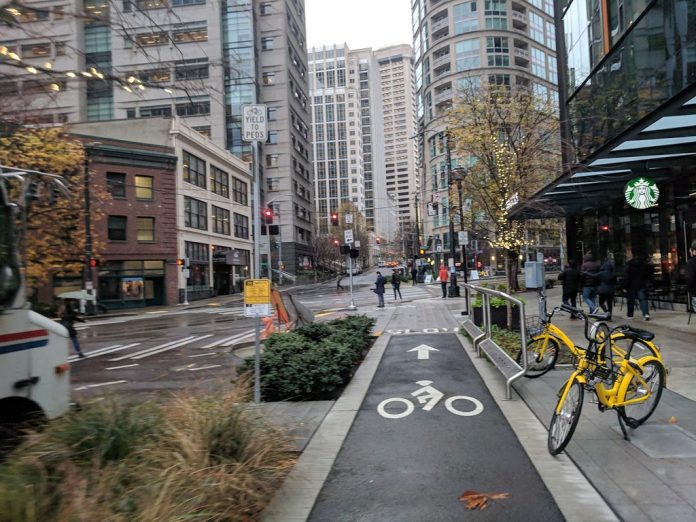This Transpo Notes roundup touches on a mix of transit and bike stories, including:
- A delayed bus layover project and bike lanes in South Lake Union;
- A state ferry crashed in West Seattle last week; and
- Setting priorities for West Seattle and Ballard Link studies.
Bus layover project in South Lake Union delayed, along with planned bike lanes
A planned King County Metro bus layover facility along Eastlake Avenue E in South Lake Union has been delayed, with the 11 space bus holding lot not set to break ground until this fall. That’s a year and a half later than King County had originally planned to start the project, after bids for construction in 2021 came in higher than anticipated and the King County Council needed to approve a higher budget for the project at the end of last year.
At the same time, the Seattle Department of Transportation (SDOT) is poised to add protected bike lanes to the northern section of Eastlake Ave this summer, with the bike lanes planned in the southern section not coming until the bus layover facility is installed. Originally, the lanes were planned to be installed in the reverse order, with the northern segment coming quickly on the heels of the southern segment.
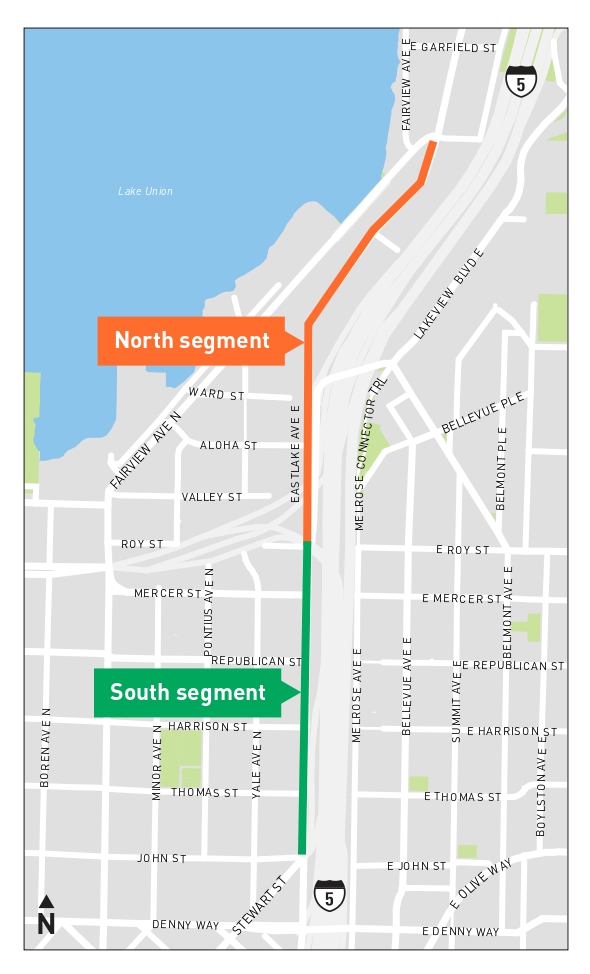
Once complete, in spring of 2024, the Metro layover facility will accommodate six buses at a time in an off-street holding area, with space for another five buses along the street. The protected bike lanes will generally run one-way on each side of the street next to the curb, except for the area immediately adjacent to the layover area where people on bikes will share a wider sidewalk with people walking.
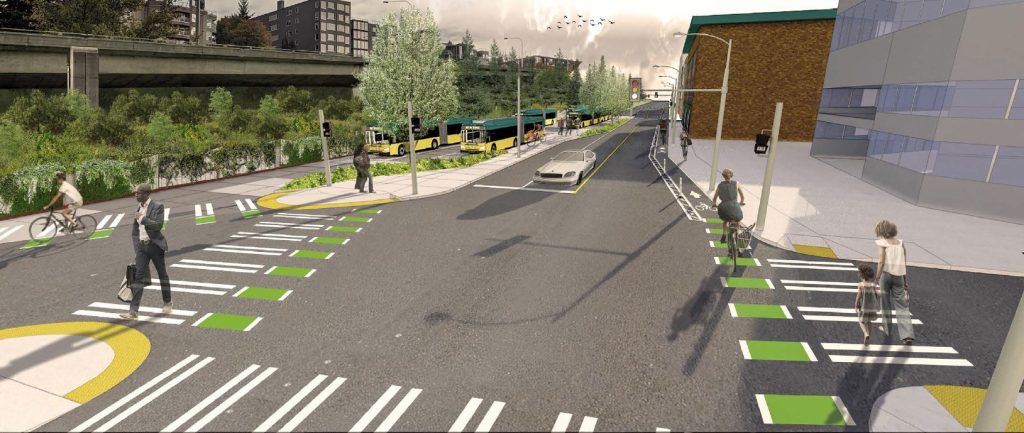
The layover facility will also come with a new comfort station and operations building for Metro, but it won’t be open to the public. Riders looking for restroom access will have to find it elsewhere.
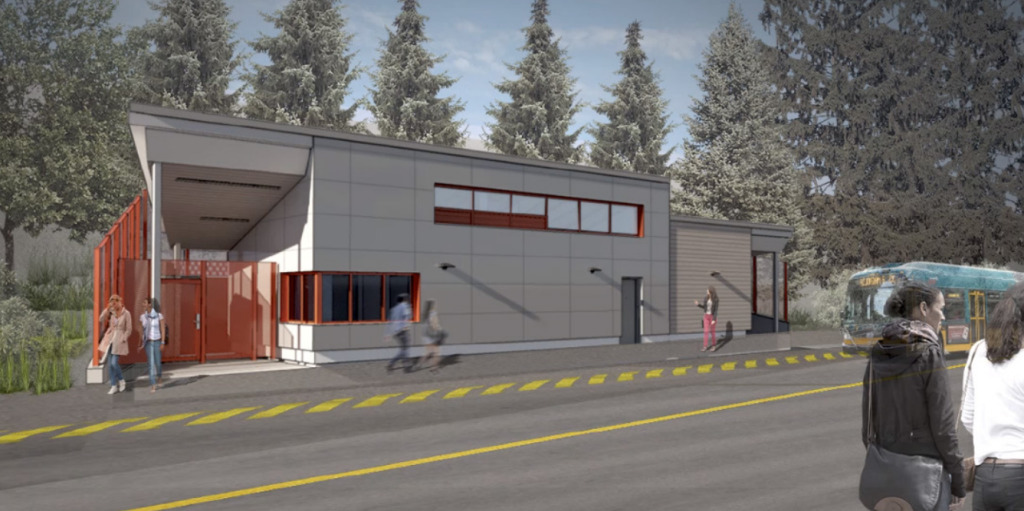
The Eastlake layover project has been in the works since 2017, as Metro attempts to get ahead of the need for additional layover space near downtown Seattle to accommodate increased service levels expected in the coming decades even as the agency expands its bus bases around the region. Layover spaces closer to downtown enables drivers to spend less time “deadheading” back to bases without riders. The total budget for this project, including design, is $18.6 million dollars.
Ferry strikes pylons at the Fauntleroy dock, out of service
On Thursday morning, the Washington State Ferries had a serious ferry incident at the Fauntleroy dock. On approach, the M/V Cathlamet struck pylons in the water before drifting toward the shore. The vessel was heavily off course before the strike occurred, which is why it didn’t immediately reach the dock and had to be moved back to it to offload passengers. Damage sustained was very heavy with the upper deck crumpled and side partially torn into. No one was seriously injured in the incident, but it did put the ferry out of service for an undetermined period of time while it’s repaired. Service at the dock was suspended until the vessel could be moved to Eagle Harbor.
By Thursday afternoon, Washington State Ferries managed to restore two-boat service on the Triangle Route (Fauntleroy-Vashon Island-Southworth) with the M/V Kitsap filling in on it. King County Executive Dow Constantine also ordered extra King County Water Taxi service to support travel to Vashon Island from Seattle. However, with the M/V Cathlamet out of service, it does put more strain on an agency already reeling from a limited number of vessels and low staffing levels. Service has been suffering for the past year with increased unreliability, lower frequencies, and longer queues for passengers with cars. Last month, the agency also walked away from a bid for new vessels due to estimated costs, which means delivery of modern equipment will be further delayed.
Why the vessel crashed is still unclear, but the United States Coast Guard was called in to investigate the circumstances in coordination with the National Transportation Safety Board and Washington State Ferries started carrying out an internal investigation of the incident. The captain of the vessel resigned following the incident.
Sound Transit charts next steps for West Seattle and Ballard Link studies
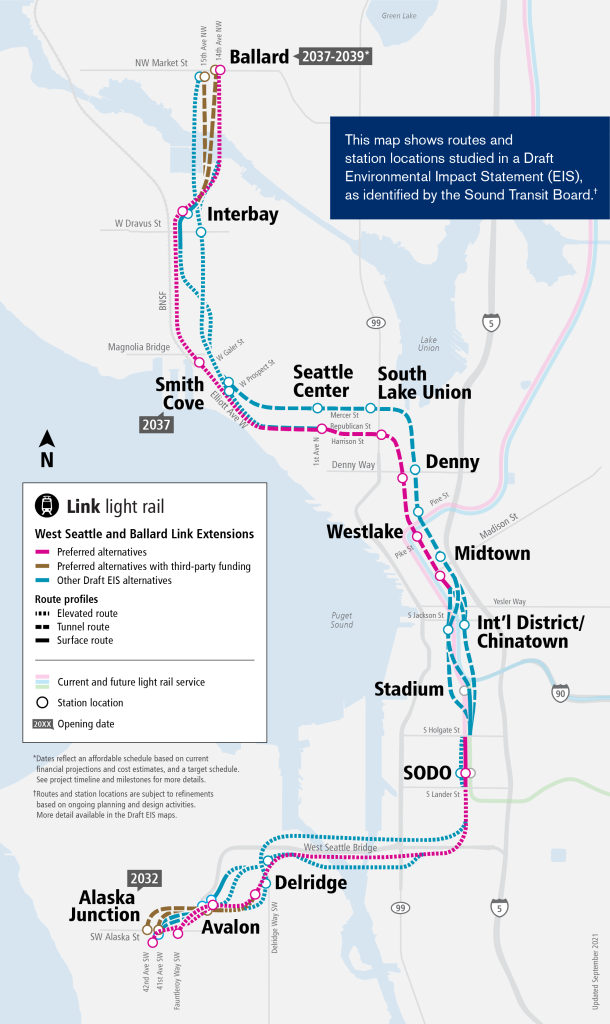
On Thursday, the Sound Transit board approved actions related to the next phase of planning for the West Seattle and Ballard Link extensions. The actions essentially bifurcate the projects again, putting them on separate environmental review paths with the West Seattle Link extension entering the Final Environmental Impact Statement (FEIS) stage first. The Ballard Link extension will undergo a further study process over the next six months to select a preferred alternative to be studied in its FEIS. All of the alternatives are built upon those studied in the Draft Environmental Impact Statement.
The follow comprises the preferred alternative for the West Seattle Link extension to be studied in the FEIS and preliminary engineering:
| Segment | Preferred Option |
| Junction | 41st Avenue Station, medium tunnel (WSJ-5) |
| Avalon | Avalon Station, retained cut south of SW Genesee Street (WSJ-5), but study possible of elimination of an Avalon Station for cost savings (this was not well received by some boardmembers) |
| Delridge | Andover Street Station, lower height (DEL-6) |
| Duwamish | South Crossing of the Duwamish River (DUW-1a) |
| SODO | SODO Station, at-grade alternative staggered station (SODO-1a); also study SODO Station, at-grade south (SODO-1b) with a report by September for consideration |
The following comprises options that the board specifically wants staff to further study for the Ballard Link extension:
| Segment | Preferred Option Refinements for Study |
| International District/Chinatown | None specifically, but directing further study of options, particularly a 4th Avenue shallow tunnel, integrated connections, and activation of Union Station and its plaza |
| Midtown | None specifically, but two principal station locations are located on 5th Avenue and 6th Avenue; the board directed study of shallower stations with entrances using public right-of-way |
| Westlake | Westlake Station at 5th Avenue (DT-1) with possible station entrance consolidation |
| Denny | Denny Station at Terry Avenue (DT-2) with possible station access on both sides of Denny Way with entrances using public right-of-way |
| South Lake Union | South Lake Union Station at Harrison Street (DT-1) |
| Seattle Center | Seattle Center Station at Mercer Street (DT-2) and Republican Street (DT-1) but shifted west |
| Smith Cove | None specifically, but two principal station location options are elevated at W Galer Street and W Prospect Street; board directed possible adjustments and consolidation with the Interbay Station |
| Interbay | Interbay Station, retained cut on Thorndyke Avenue W (IBB-2a and IBB-2b) |
| Ballard | 14th Avenue Station (IBB-2a) using a tunnel with 15th Avenue access and 15th Avenue Station (IBB-2b) using a tunnel |
In addition, the board broadly directed staff to make refinements to studied options, such as minimizing displacements, improved station entrances and transfers, shallower stations, better elevators and escalators, and expandability.
For the Ballard Link extension study work, the board is asking staff to provide a progress update in November and a final report in February. Early next year, the board could pick a preferred alternative for the Ballard Link extension to be studied among other options.
Stephen is a professional urban planner in Puget Sound with a passion for sustainable, livable, and diverse cities. He is especially interested in how policies, regulations, and programs can promote positive outcomes for communities. With stints in great cities like Bellingham and Cork, Stephen currently lives in Seattle. He primarily covers land use and transportation issues and has been with The Urbanist since 2014.

